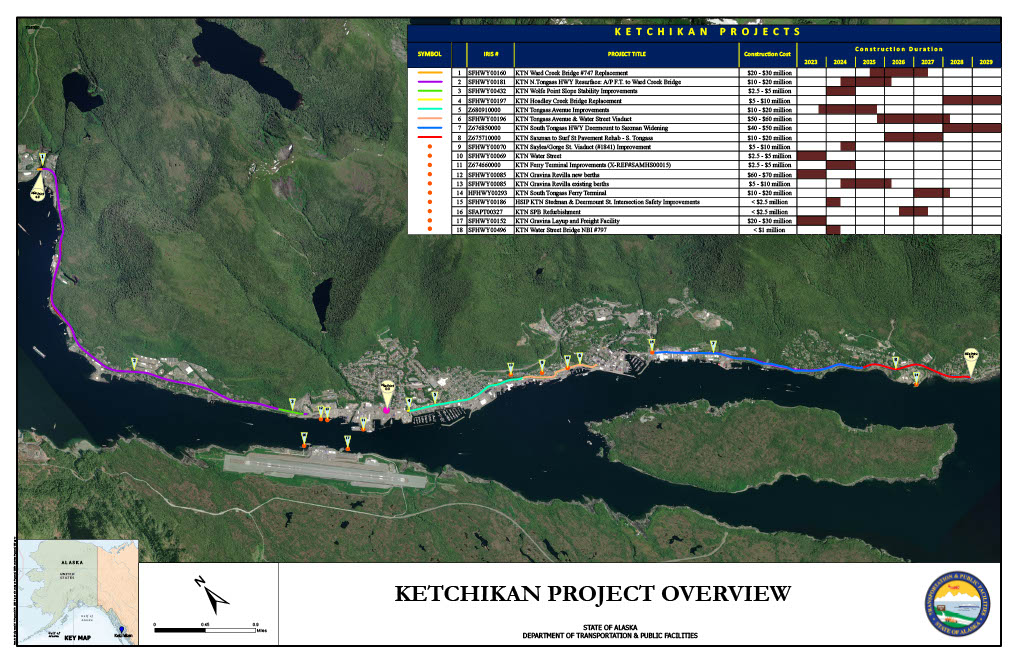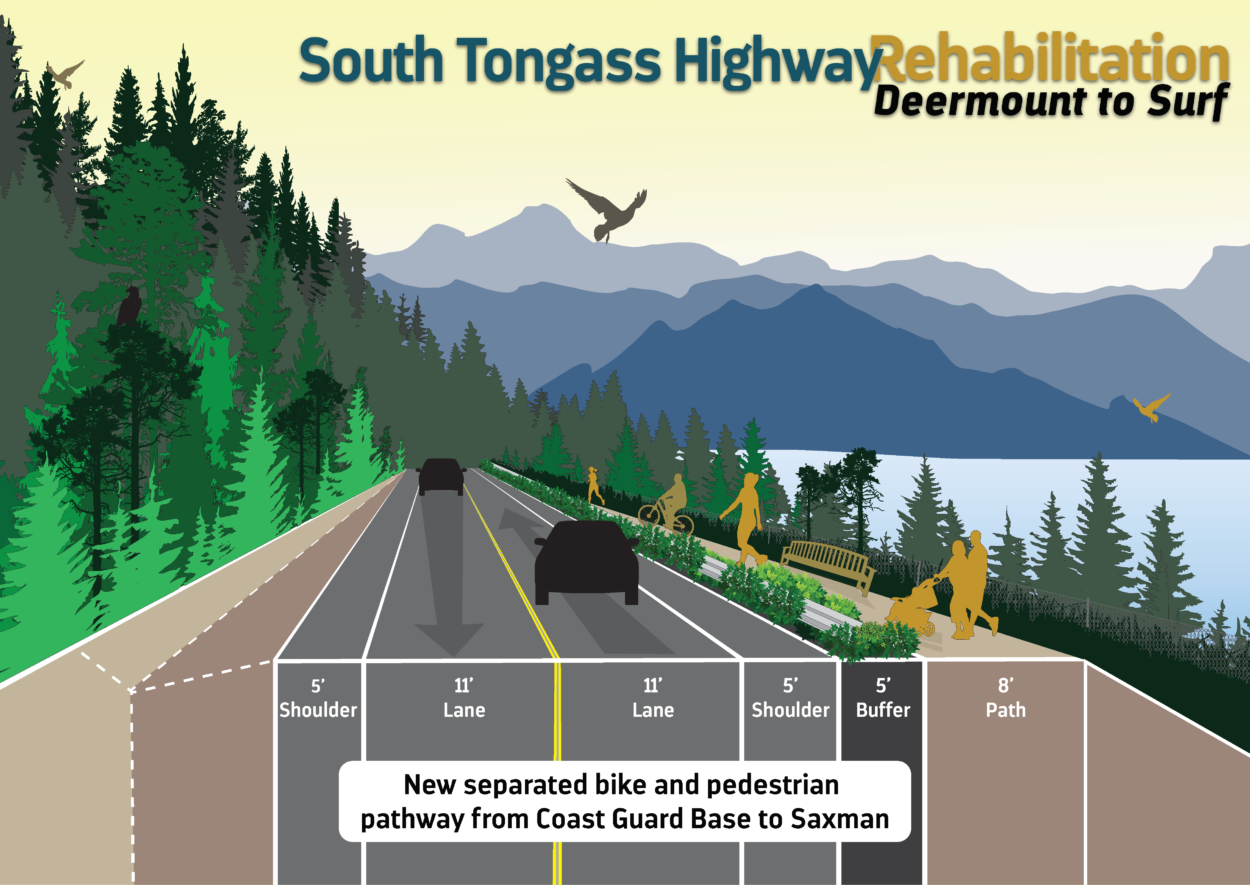
The state’s Department of Transportation plans to fix Ketchikan’s aging bridges in the next decade. That’s a major focus of the state’s long-term infrastructure plan for the community. The plan was announced at a community meeting on October 24 at the Ted Ferry Civic Center. It includes $200 million worth of projects.
Christopher Goins, the Southcoast Regional Director for the Alaska Department of Transportation & Public Facilities, stood at the podium in front of a large infographic of the Ketchikan waterfront. He is discussing project number one – replacing the Ward Street Bridge, which he says is failing.
“We’re keeping good eyes on it. The questions that I asked directly to our bridge engineers is does this project come in time before we would have to weight rate that bridge,” he said. “Weight-rating” is reevaluating the amount of weight the deteriorated bridge can safely handle and then limiting the flow of traffic across it below the legal limit. In the case of Ward Creek, that means changing it from two lanes to one. Goins said that if this project is implemented in time, that won’t need to happen.
The Alaska DOT listed 18 projects for Ketchikan between now and 2029. That includes two projects happening now, which are part of the Gravina Access Project. That’s the ongoing effort to help people get between Gravina Island, where the airport is, and Ketchikan. Another project – upgrading the viaduct at Water Street – was recently completed.
Ketchikan’s projects range in cost and length. The state says the Water Street Bridge will take less than a year and cost less than $1 million. But, repairing parts of the Tongass Avenue viaduct is a multi-year and multimillion dollar effort. That bridge is slowly and steadily giving in to gravity.
“I will say that the rest of the bridge is in a not great situation. It has significantly deteriorated. I want to be careful when I say that,” Goins explained.
The Tongass Street Viaduct is the longest bridge structure in the state of Alaska and repairing it, Goins said, won’t be easy. “Oftentimes, when you’re driving over it, and we see buildings on either side, or we think, ‘Oh, this isn’t a bridge, this is covered by ground.’ It is not. It is a bridge, and it is an extensive amount of infrastructure. And it has extensive challenges.”
The state has hired a Seattle-based engineering firm for consultation on the project. Goins said the deterioration of the bridge isn’t cause for alarm yet. He reiterated that DOT’s goal is transparency and community support.
“Our bridges designers are very, very smart people. They’re doing the analysis, and they believe it’ll carry the loads. I’ve learned from personal experience that if they believe it is not going to carry that load and support the safety of you all who drive on it every single day, they will shut it down faster than I can blink,” Goins said.
But residents attending the community meeting expressed concern not just about the weight of local traffic, but the infrastructure strain posed by tourism. Ketchikan has seen an increase in visitors to the city through cruise ship tourism. And with that brings double decker buses and more foot traffic on the strained viaduct.
Goins assured attendees that community growth and tourism will be considered in planning for these projects. Both the Ward Creek Bridge and Tongass Avenue viaduct projects are slated to begin in 2025.
The long-term plan also includes improvements to the ferry terminal and South Tongass Highway, a road that residents say has long been in disrepair.






